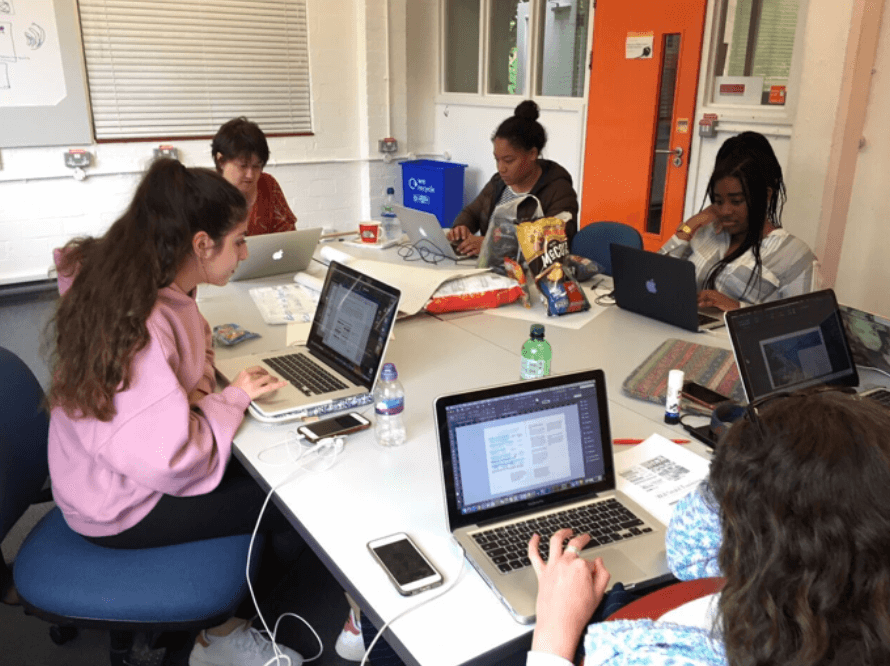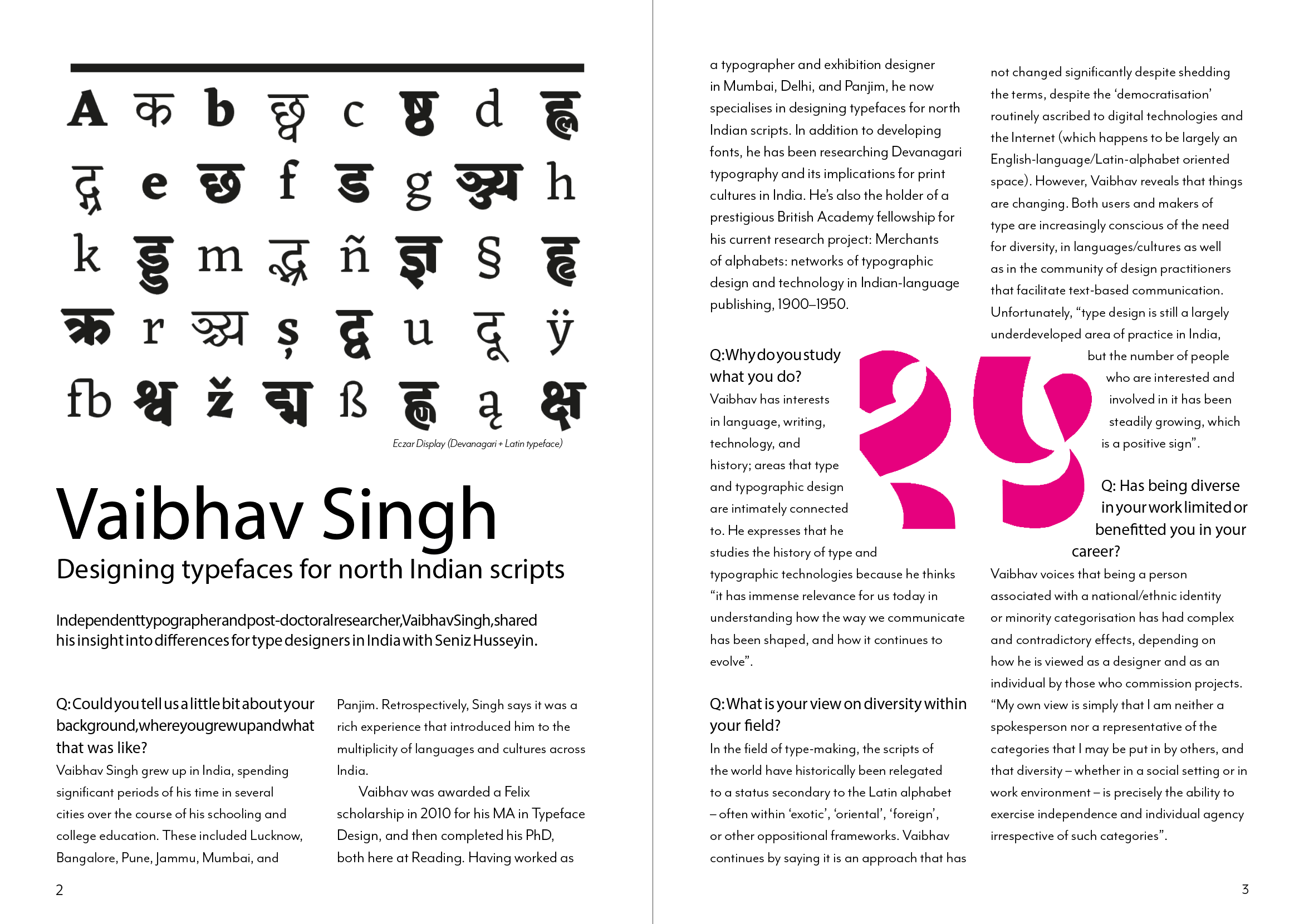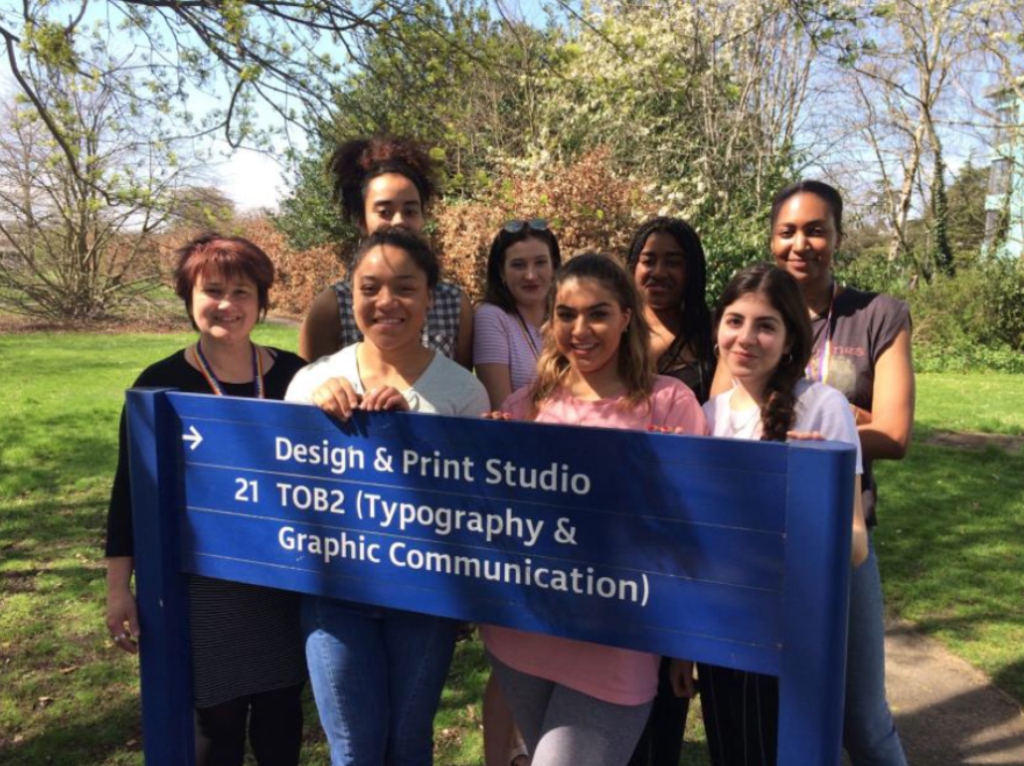Background
In the beginning of part 2, myself and other students that ranged across the three-year groups started, alongside staff, the I am, We are Different by Design group. The group set out to create a sense of diversity and inclusion within the department as we felt this was somewhat lacking. We aimed to do this in a range of different ways, this specific reflection however relates to the process and creation of the first edition of an annual zine. As a group, we received funding from the university’s Partnerships in Learning and Teaching (PLanT) scheme to create this zine and send it to print in order to distribute it across the university. Our motivations stemmed from believing that the zine would be the best way for us to communicate our opinions and also it gave us all an opportunity to use out graphic design skills learned on the course.
Brief
Our brief was to create a zine (mini magazine) that showcased work from current and past students within the school (Art, Film and Theatre and Typography). This included sourcing content, conducting interviews and designing the entire zine within a short time. Our production time was quite short as we all had different schedules (due to the different year group scheduling) and the moment we got funding to the deadline for production being quite close to each other.
We planned for an A5 dimension as it allowed for more content to be included and more copies to be printed and distributed. Additionally, we collectively decided on a matte finish to ensure durability over time. Due to the nature of the content we aimed for the zine to look fun and exciting and like a celebration of the diverse work that is created at this university. Our main aim was to showcase this and allow for people to see and read about work they normally would not be exposed to.
Research
For inspiration and research, we looked at different zines and magazines. The tasks were delegated between us so some of us researched typography whereas others researched layouts etc. Although somewhat useful, sketching out themes and ideas served more effective than looking at other examples as we were creating something that closely reflected the content used throughout.

Communication
Throughout this project, we all communicated through Trello, Facebook and with weekly group meetings that always took place on a Wednesday. This was due to the fact that this was the only day where we all had time to meet for a couple of hours at an appropriate time. Having weekly group sessions was really useful as it added to a sense of community we were all lacking, but also made it easier to collaborate and bounce ideas off of each other.
Process
Our process started with discussions concerning who and what we wanted to feature and why. Our featured contributors needed to be engaging with diversity in some kind of way as that was what we aimed to showcase. At times this was quite challenging considering we didn’t want to interpret certain works in the wrong way if they weren’t intended to be about diversity and inclusion (but instead merely personal projects – so diverse by default).
In order to compile and design content, we interviewed individuals across the school as well as researchers and graduates. In order to do this we needed to do research and get ethics approval beforehand. This process of conducting interviews was very useful as it allowed us to explore and develop our professional skills as we had to be respectful and professional in our data collection.
The interviews we conducted allowed us to create articles and spreads showcasing a nice range of work showcasing projects that explored diversity, identity and inclusion (as hoped). Some examples of works that we featured is artwork representing equality within visual arts as well as more researched based content focussed on assisting medical staff.
The cover design of our zine featured a motif of camera lenses – this represented seeing things from different perspectives and capturing these. The range of colour used reflect inclusion and add to the fun and inspiring aspect of the zine. Overall, I can say we were collectively pleased with the outcome and reception.

Feedback
After completion of our zine, we received a range of positive feedback.
“We are very inspired by the whole project and how we can expand it to other departments. The zine turned out so well!” – Lisa Woynarski (School diversity lead)
Encouraging words like this have led us to be even more motivated to continue to do this kind of work, which we did having recruited members in this year (and hope to continue to do so throughout the years).
Conclusion
In conclusion, this project was one of the most fruitful and beneficial personal projects that I have been involved with throughout the three years of my time at the university. Getting to know members from different year groups allowed for us all to experience diversity and a sense of community in a way that isn’t very common. I am grateful to staff members that allowed for this and encouraged it as often times extra-curricular activities may seem overwhelming or big commitments. We were never made to feel like we had to attend the session, or we would get into trouble. Due to this, it seems we were more inclined to get involved because that pressure was lifted. Additionally, being able to create collaboratively whilst not being marked gave a different perspective into what and how design work can be (considering in most cases this is paid work that doesn’t always serve the designer themselves). Now being at the end of my journey here I really encourage other students to get involved with groups and communities such as these, and if in the future I am, We are Different by Design doesn’t exist, I hope our efforts can inspire others to undertake their own projects within the school.

